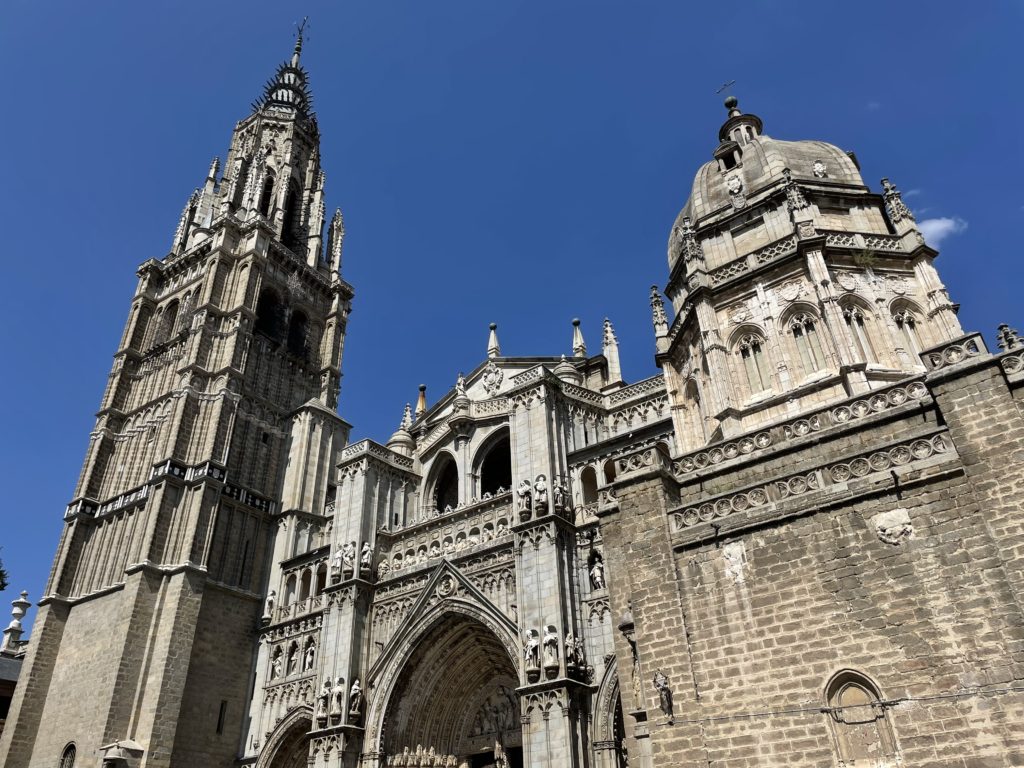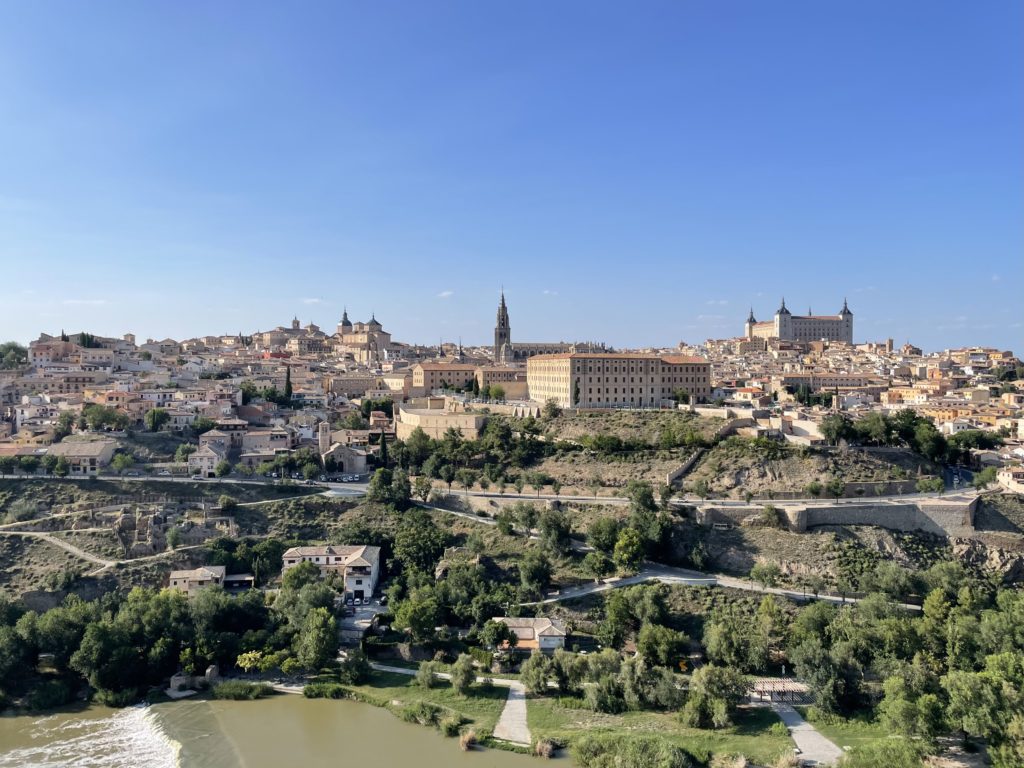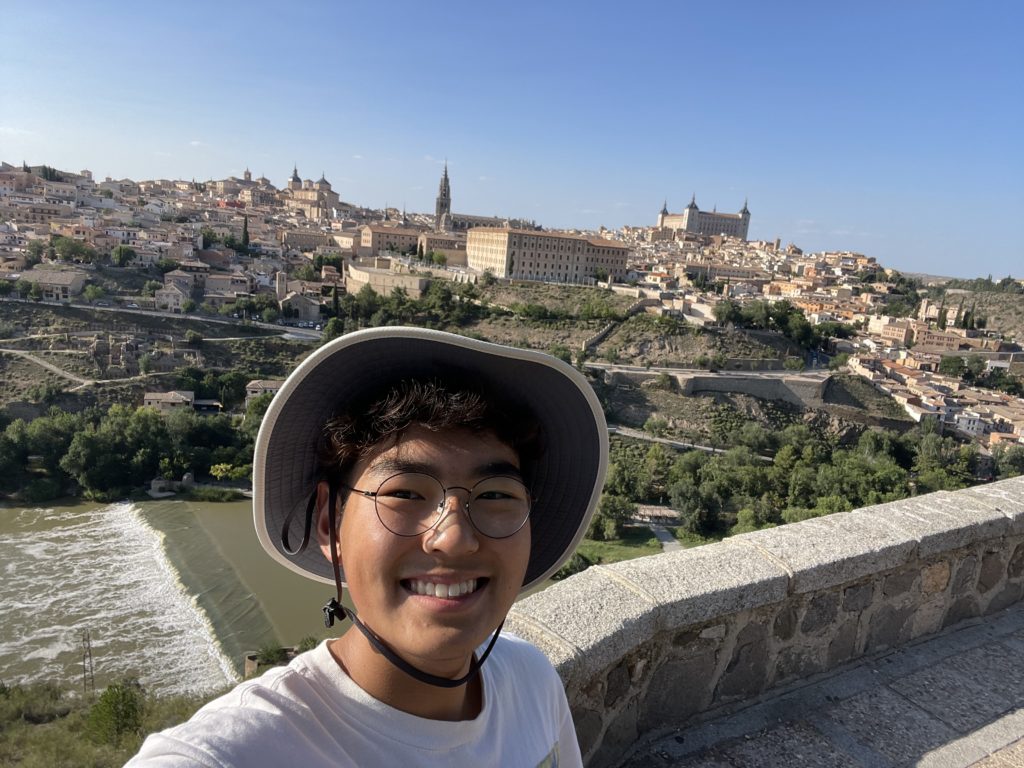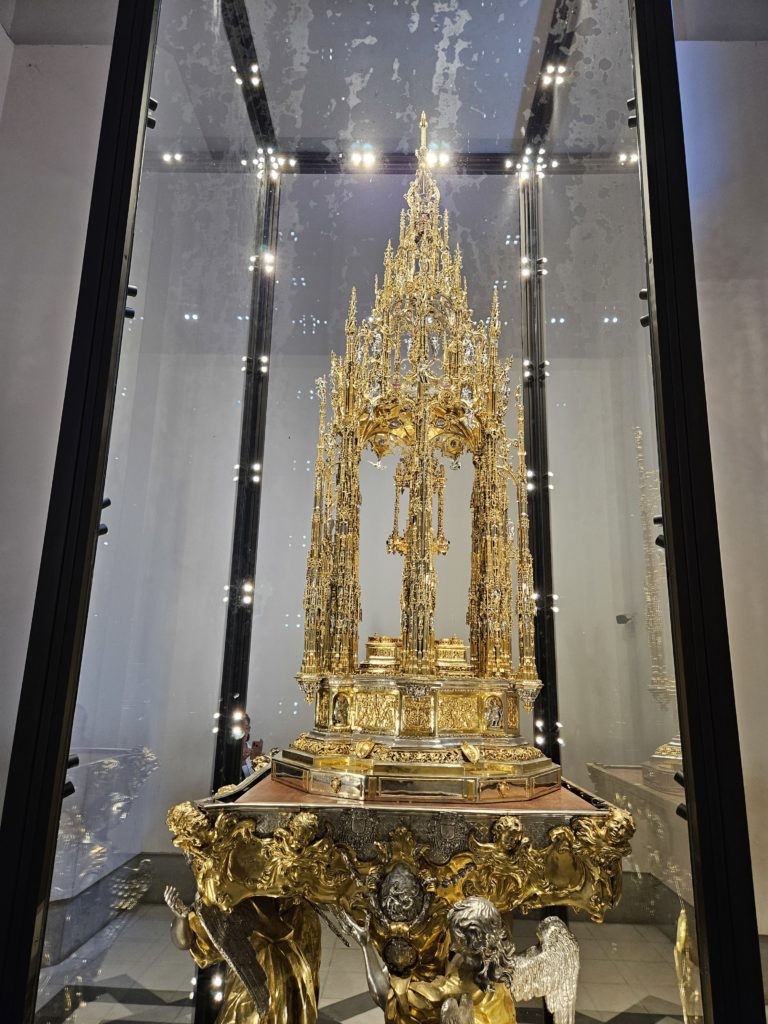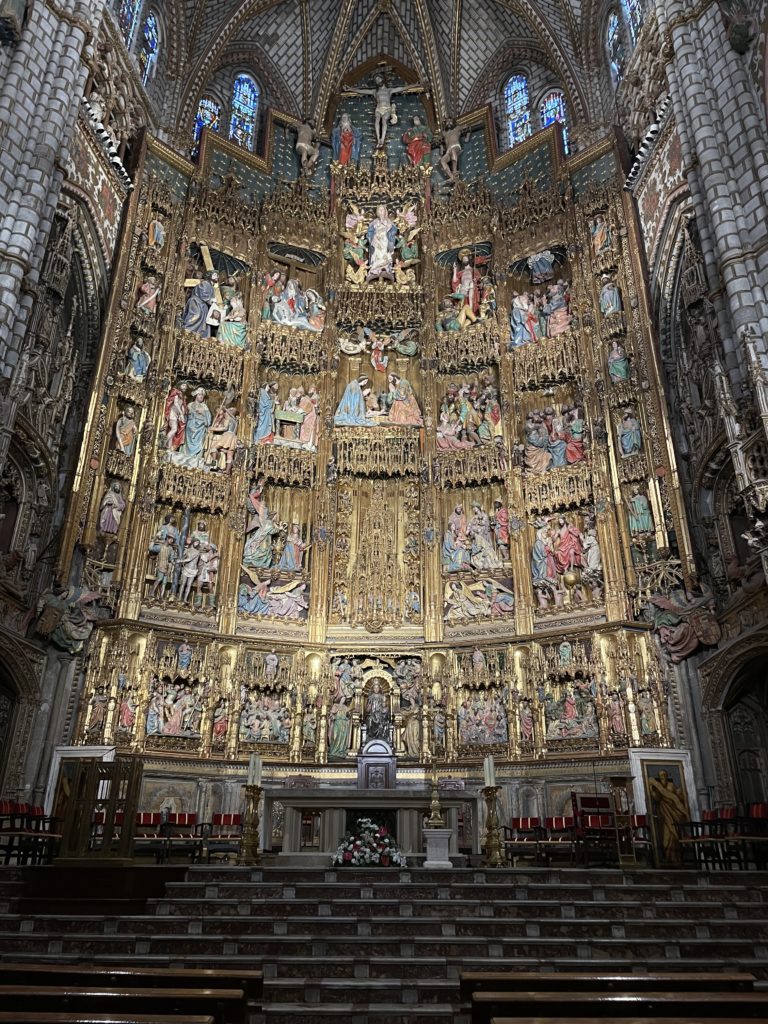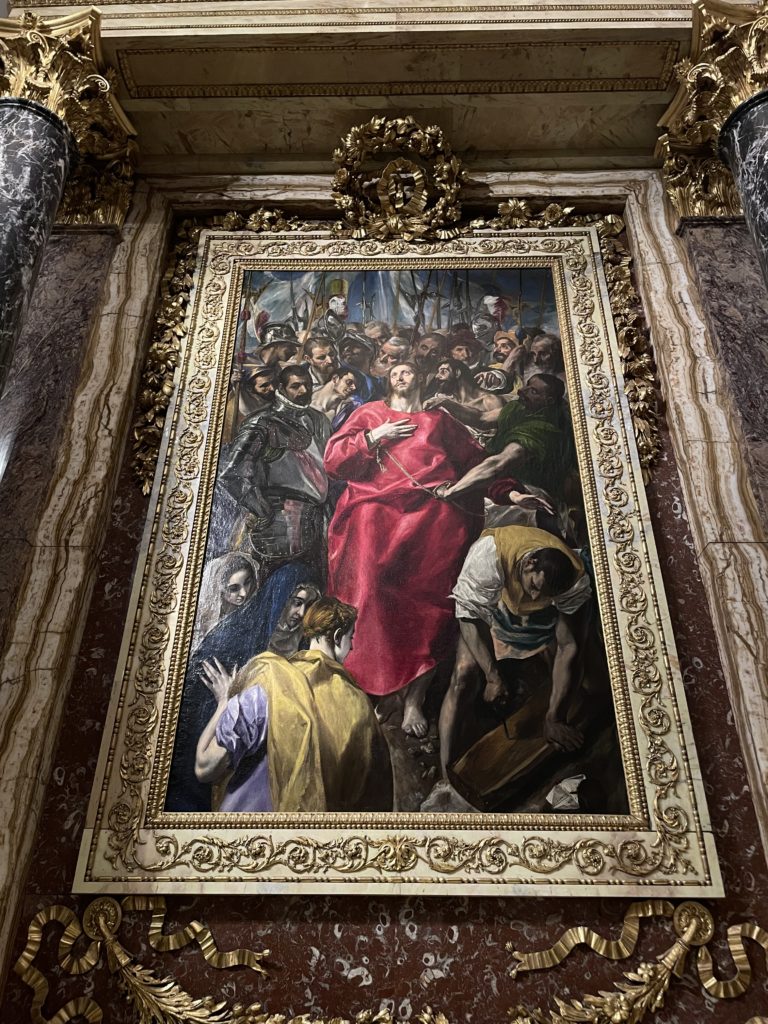Segovia – the Alcazar and the Aqueduct
Spain is a big country with cities that have their own unique distinctive history and artifacts (Spain didn’t exist as a unified country for a long time), so ideally you visit each major city – that’s why they say you can easily spend an entire month in Spain alone. But for travelers with limited time (which might be the case for the majority), what people often do is anchor their schedule around the two major cities of Madrid and Barcelona, and visit nearby cities if time allows. Both Segovia and Toledo are one hour car drive from Madrid, so we checked out those two cities.
The Segovia Alcazar is a beautiful castle that they say gave inspiration to Disney’s Snow White animation. We saw the interior halls and the royal chamber of Queen Isabella II, who was the queen at the time when Spain reconquered their land from the Moors in 1492. 1492 is also the year America was discovered, so it’s an important year for the Spanish history.
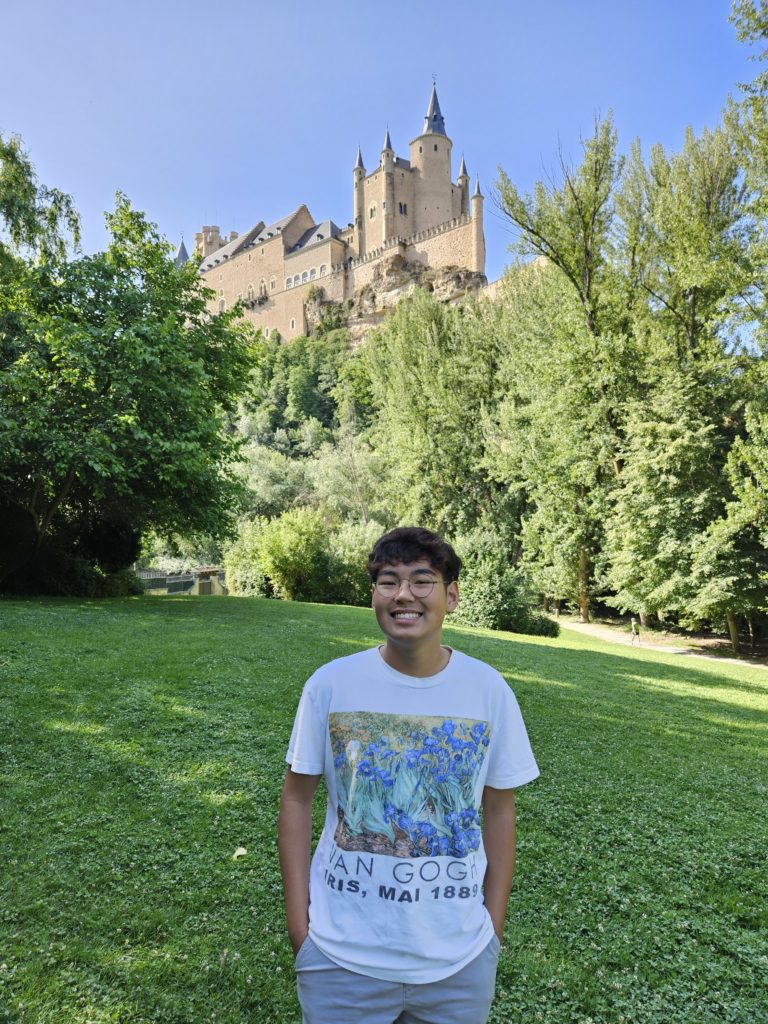
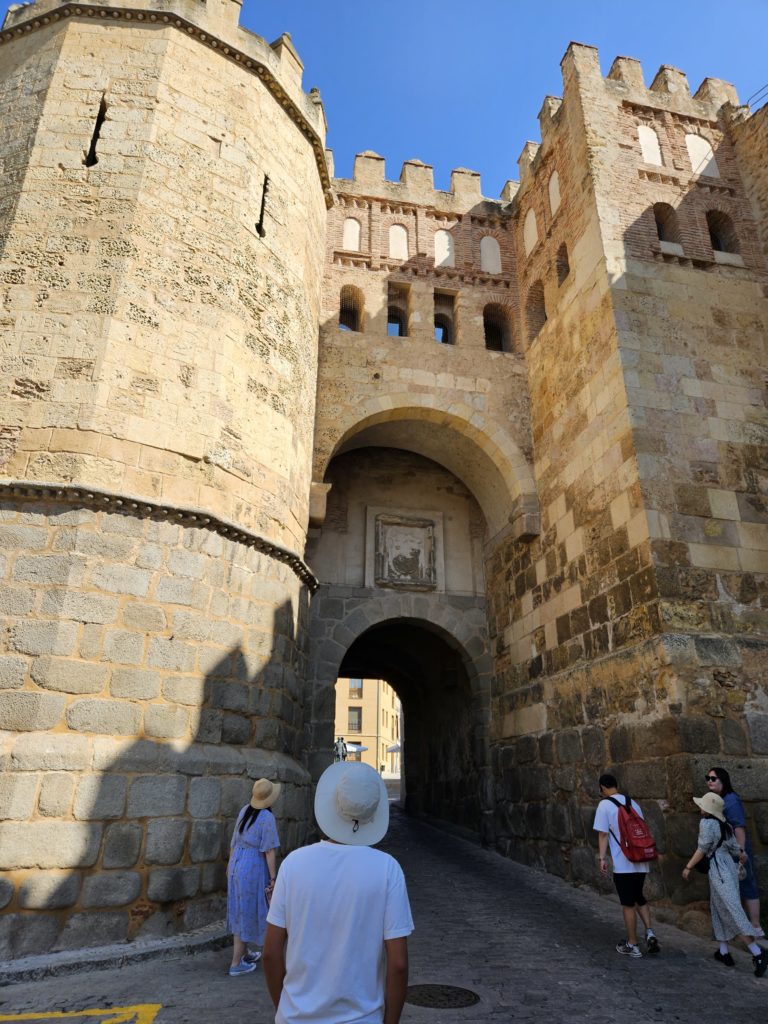
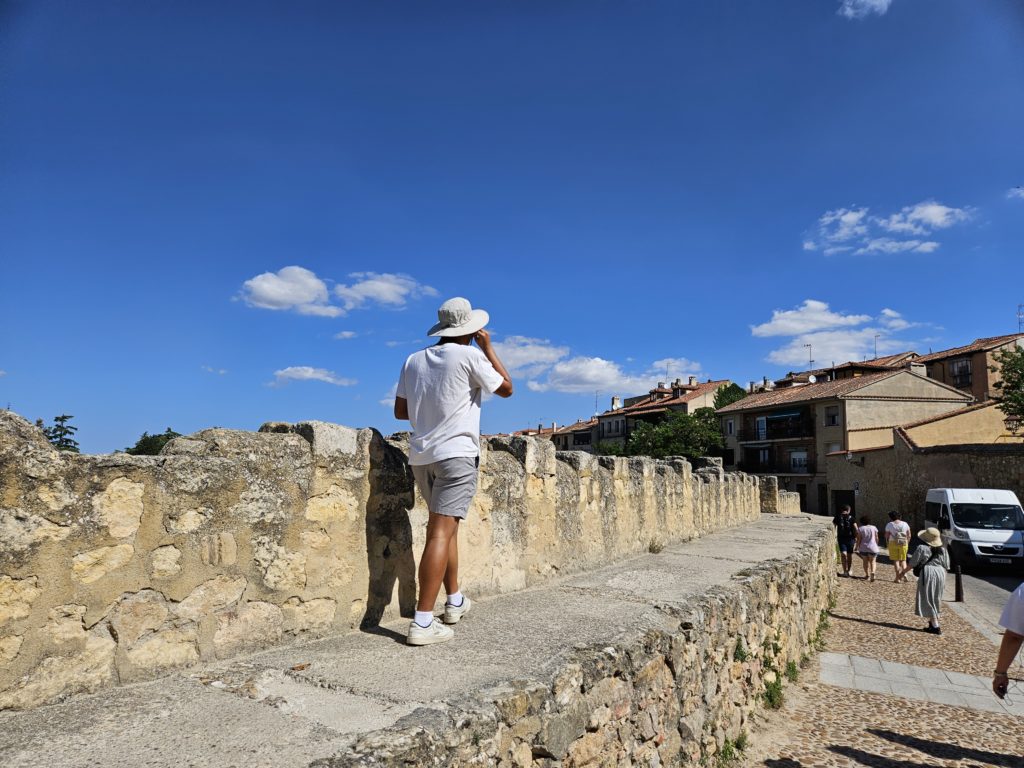
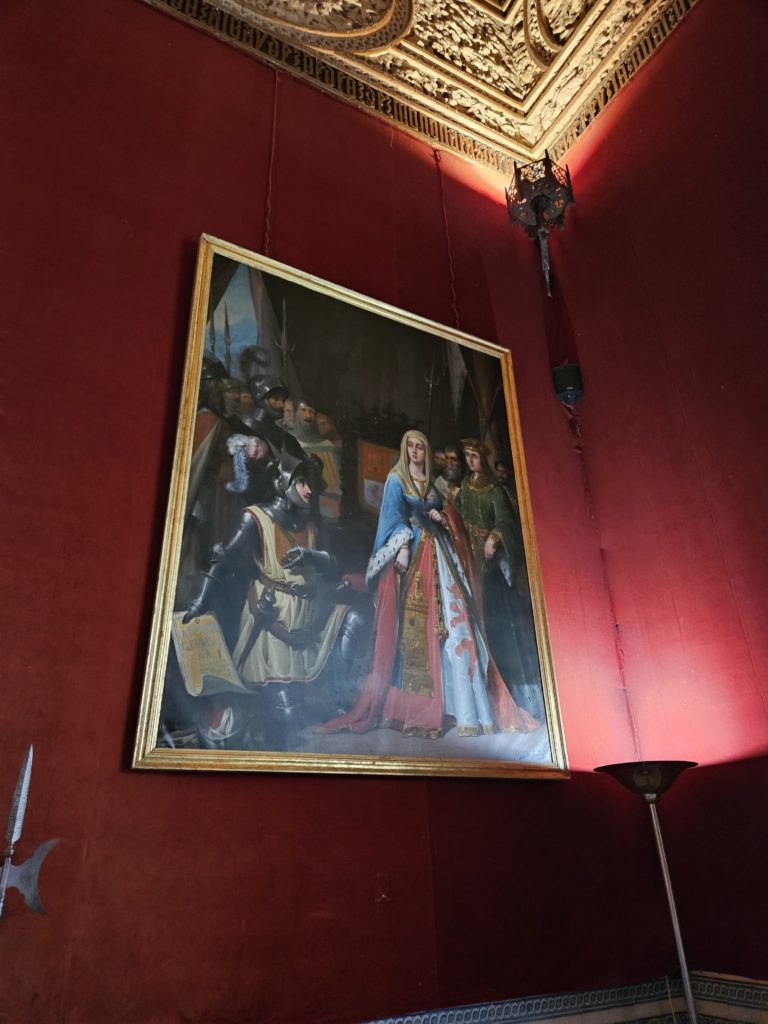
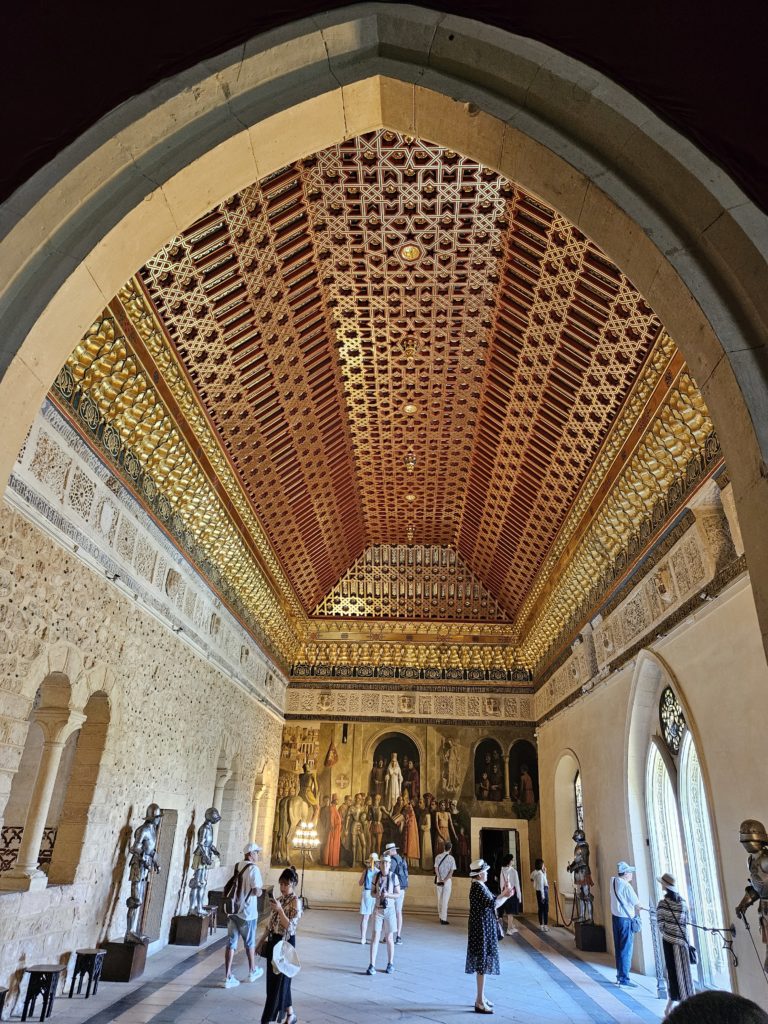
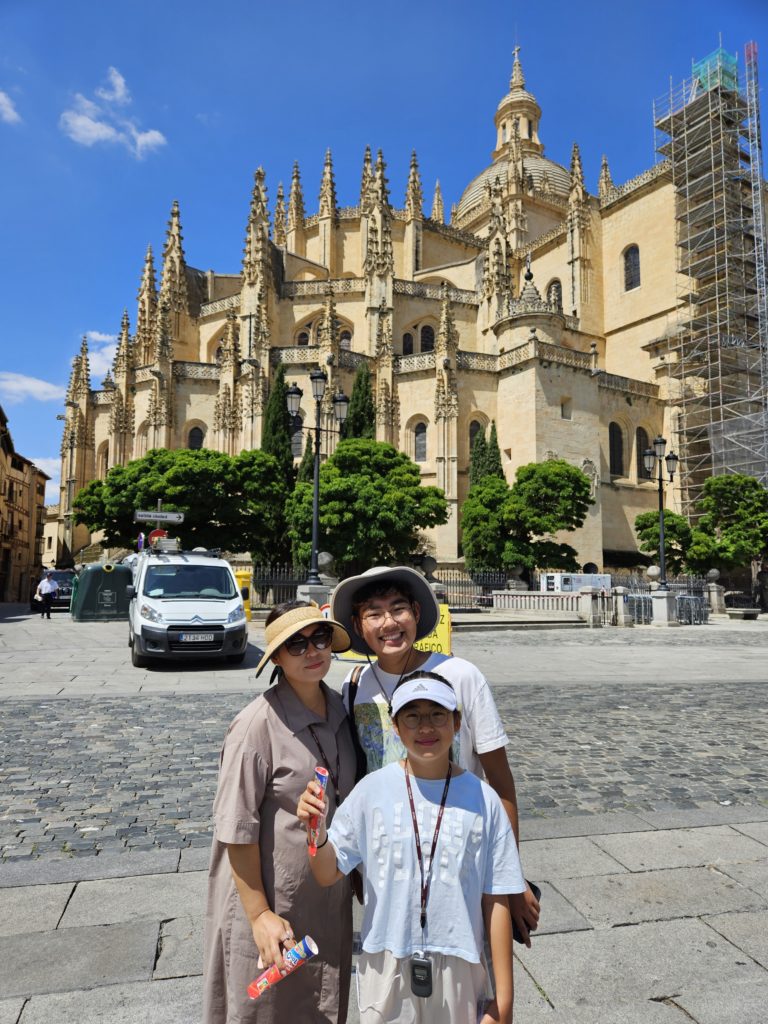
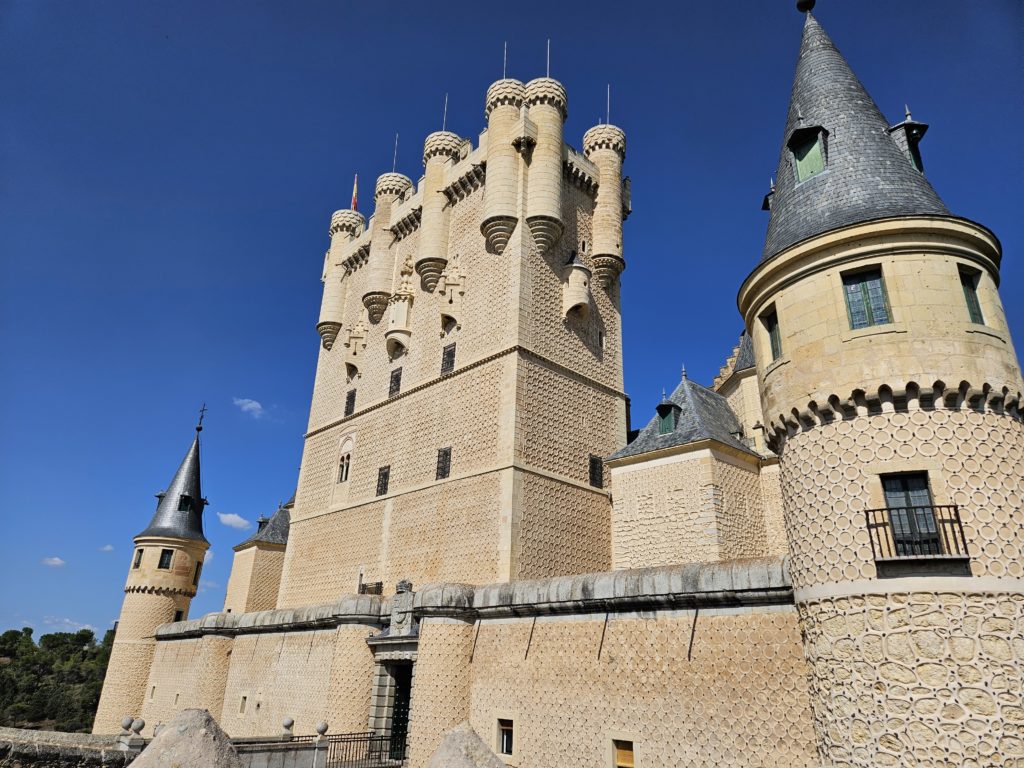
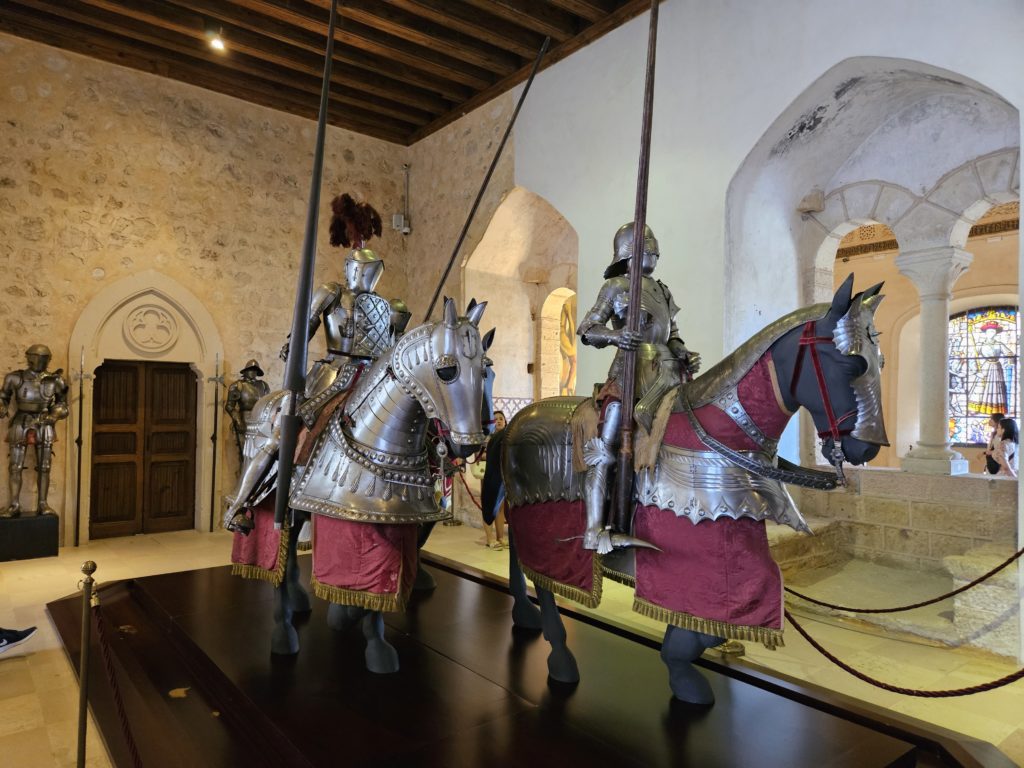
The Segovia Aqueduct is one of the most notable remaining aqueducts from the Roman Empire. One just marvels at the fact that the architecture was built some 2,000 years ago and had been in use until quite recently (early 20th century).
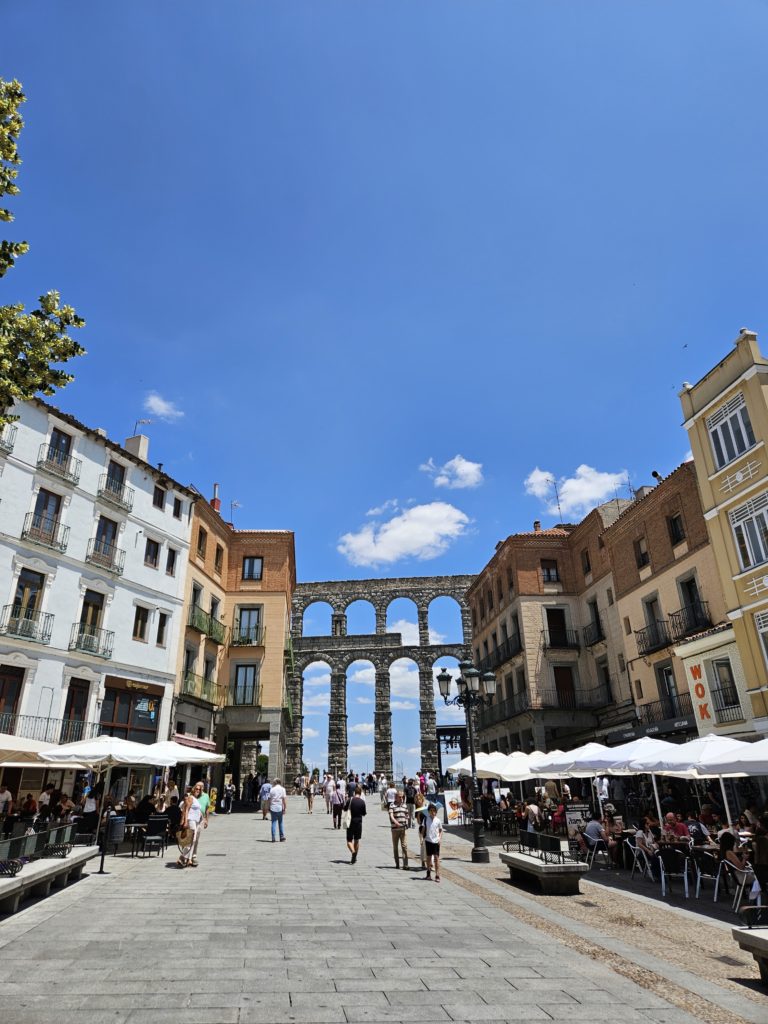
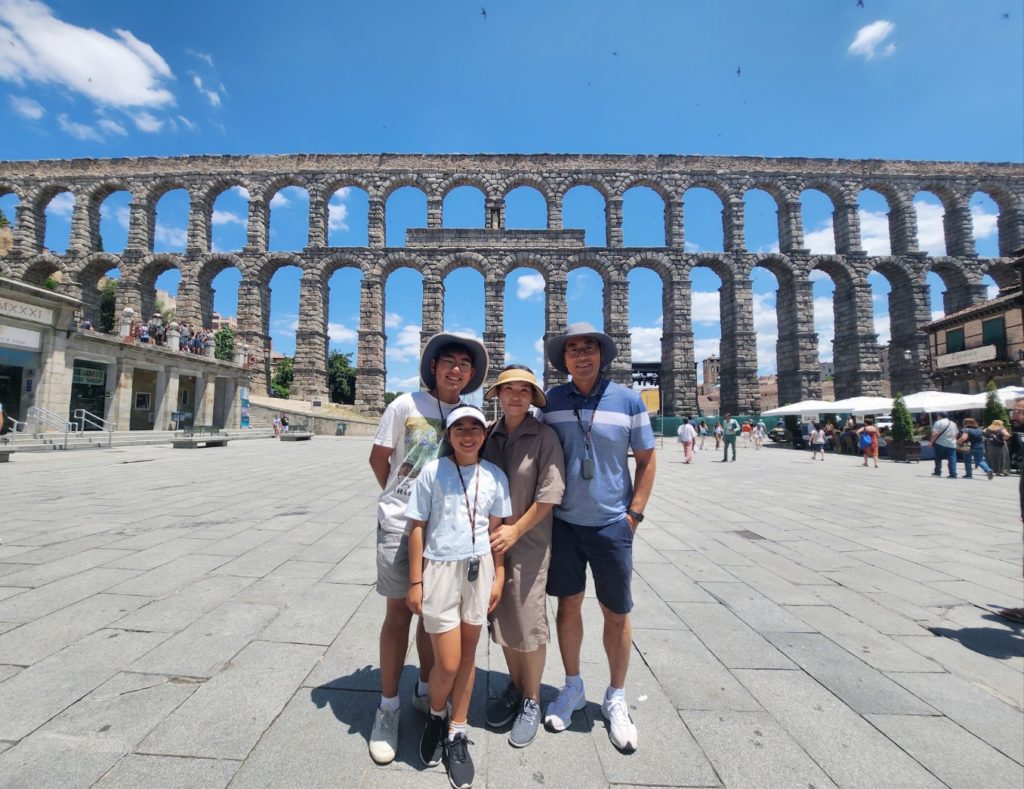
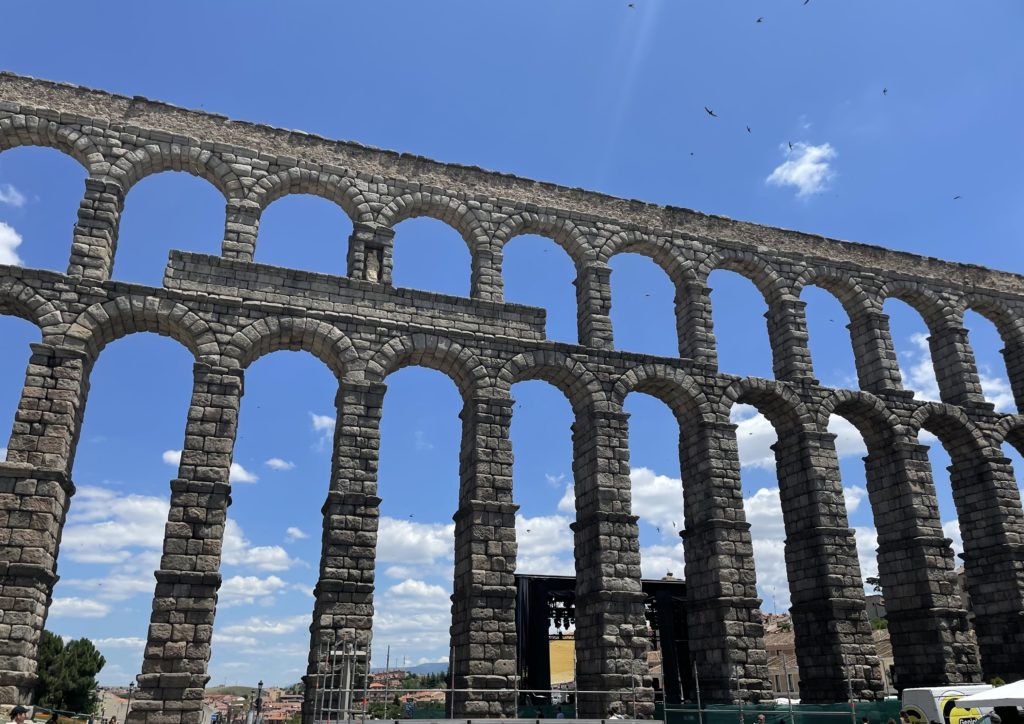
Segovia is also famous for Conchinillo, the roasted suckling pig. They had “dish breaking” performance – the pig is so tender, it’s cut by a plate, then they break the plate to prove it’s just a regular plate, not a plate-looking knife.
Toledo Cathedral
Toledo, known as the former capital of Spain before Madrid, is about one hour from Madrid. Toledo is a UNESCO world heritage site that has a lot of old city charms.
Toledo Cathedral is the second largest cathedral in Spain (the largest being Sevilla Cathedral). The cathedral has two towers, but interestingly the towers, unlike most cathedrals, are not symmetrical. The interior features a massive skylight that lets light in and illuminates the tabernacle at a right angle. There are also many beautiful stained glass windows and beautiful art pieces, such as the Monstrance, a gilded sculpture that’s supposed to signify the body of the Christ, and the ceiling fresco that’s reminiscent of Michelangelo’s ceiling painting in the Sistine Chapel.
There are annexing rooms featuring paintings and other art works, such as The Disrobing of Christ by El Greco.
